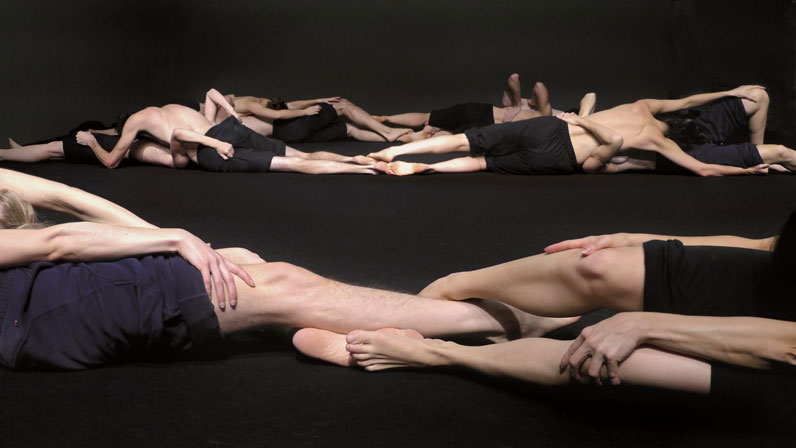
“We are approaching an oscillation between organism, apparatus, sensuality and hybrid matter.†from the invitation card for the dance piece Pieces and Elements by Isabelle Schad at the HAU Berlin, 28.11.2016
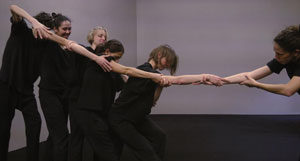
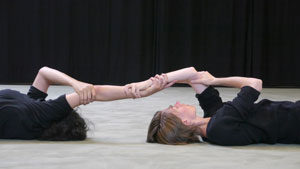
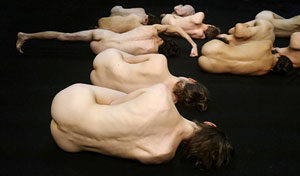
The dancers had now turned 90 degrees and split into two groups that faced each other from the opposite sides of the stage, now in profile for the audience the gestures unfolded a different potential. Becoming almost abstract, losing their meaning as gesture and giving space to thought as: ‘Could that be raw motion?’ But would that be a correct definition? These movements are still initiated and controlled by the dancers’ bodies, somewhat ‘guided moves’. A.Noe, who recently wrote on the notion of mere action as the moment when movement directs itself as activities that happen to us and eventually organize us. Eventually these tiny moments of not thinking about, of being initiated in affect, certainly occur for these dancers in the flow of action. Was it these rather imperceptible blinks that made especially the first third of these ‘pieces and elements’ so worthwhile, so diverse for the eye despite its repetitious structure?
Dissolving towards the side edges of the platform the center stage becomes quiet while the performers sit and roll their dark pants up above the knee. Memory arises reminding Schad’s strict aesthetics in the 2015 piece “collective jumpsâ€, which accented bright skin against dark clothes and background. This indicator of emphasizing control again over a wider diversity seems to mark the second part that could be entitled organic machinery. The dancers now roll, hover, or stutter mostly in couples, with interlaced arms or legs– e.g. one performer activates the legs of her laying partner – or in an entangled upper/lower body crisscross across the stage. Naked arms and legs, or sometimes bare torsi accentuate the dark on dark setting. As fragmented body parts, their bony shapes form complex conjunctions. Coalescing organisms, which move or are moved in indistinguishable and seemingly reversible actions. Mutual influence that rather than being an impulse to incite another’s motion appears shifted into a flux of constant resonance.
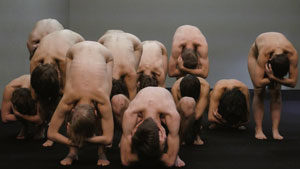
In Schad’s recent work the body seems to be approached from its smallest possible particle that of cellular perspective for which she finds exciting and disturbing images. In its stronger parts even the music/sound by Damir Simunovic reminded a cellular osmosis (see example for the noise of cells), while it turned to dripping water in the later part. Though asking what a body is, can never be answered just by looking at microscopic results. It is always interwoven in a history of becoming preceding and extending the ones visible at that moment.
Isabelle Schad‘s work reorganizes the human body as a movement apparatus by fragmenting specific parts which have often been overlooked as adjunct or turned away, as there are the arms, legs and the dorsal. Bringing these parts into focus and animating them in unusual ways she creates a stunning work hinting through these parts at inherent possibilities of the entire organism. Though addressed in this is always both: the amazing ability as well as the abject form. It is the open field progress and foresight might hint to, that than might become controlled by certain interests undermining the ethics of resonance, which would be mutual respect.
There is a lot of often neglected points that Schad’s work touches upon that may make you leave the performance full of unformulated questions incited by bodily formations one has not thought about before. Already for this pieces and elements is any case worth to be seen.
